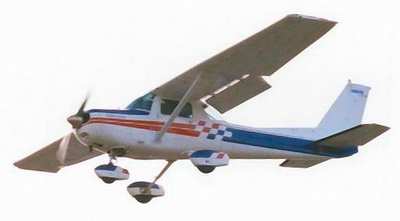Sport Pilots Have A Choice Of Flying An Airplane That Is Built To FAA Standards Or To ASTM Standards, And It Helps To Understand The Difference
Whether an airplane is built to FAA standards or ASTM standards, there’s a few things they do have in common. Both aircraft must be registered to an owner and have been issued an “N” number. They both have FAA airworthiness certificates but one is white and the other is pink. So, what’s the difference?

What Does FAA Approved Mean?
In a nutshell, an FAA approved aircraft meets design and testing requirements specified in U.S. government aviation regulations. FAR part 23 is the regulation in effect today for the certification and issuance of a Standard Airworthiness Certificate (printed on white paper) for light planes (aircraft weighing less than 12,500 pounds). If an aircraft was certified under a previous set of FAA (or possibly CAA) regulations, it retains its Standard Airworthiness Certificate.
An airplane built to FAA standards is issued a Type Certificate, but that doesn’t mean the Acme Aircraft Company can now start rolling aircraft out the door. The next step is to qualify for a production certificate. This means the company must prove to the FAA that quality assurance is in place to guarantee that every completed aircraft meets its Type Certificate requirements. Once issued, the FAA continues to assure compliance is retained through production facility inspections.

What Does Industry Approved Mean?
Because of the lack of FAA type certificated aircraft that meet the LSA definition, the developers of the sport pilot/aircraft rules looked at a different way for manufactures to produce LSA defined aircraft without going through the FAA certification process. The plan became that the industry would develop its own design, testing, manufacturing, and continued airworthiness standards, and if each manufacturer complied with the industry standards, the FAA would issue a Special Airworthiness Certificate (printed on pink paper).
It was agreed to turn to an organization named ASTM International to work with the aircraft industry to develop the standards. ASTM International is a globally recognized leader in the development and delivery of international voluntary consensus standards.
ASTM issues various publications that address the similar design criteria that are found in the FAR 23 aircraft certification requirements. These industry consensus standards are issued as ASTM documents and form the standards for S-LSA certification. Aircraft manufacturers that want to produce and certificate an aircraft as an S-LSA must comply with the ASTM standards. When a manufacturer proves to the FAA that it has complied with these standards, the FAA will issue a Special Airworthiness Certificate. This aircraft is FAA certified…it is not FAA approved.
The Big Difference
Now comes the big difference in how and industry approved aircraft differs from an FAA approved aircraft. Just as an FAA type-certificated aircraft (white standard airworthiness certificate) must continue to comply with FAA airworthiness requirements, an industry approved S-LSA (pink airworthiness certificate) must continue to comply with the published ASTM standards.
An S-LSA can be a great choice for sport pilot or any pilot wanted a lightweight 2-place airplane. However, it is very important for owners and maintenance professionals to understand the continued airworthiness difference between type certificated aircraft and ASTM compliant aircraft.
(Images from file. The Flight Design CT is ASTM compliant. The Cessna 150 is FAA Type Certificated)
 Bolen Gives Congress a Rare Thumbs-Up
Bolen Gives Congress a Rare Thumbs-Up The SportPlane Resource Guide RETURNS!!!!
The SportPlane Resource Guide RETURNS!!!! Buying Sprees Continue: Textron eAviation Takes On Amazilia Aerospace
Buying Sprees Continue: Textron eAviation Takes On Amazilia Aerospace Hawker 4000 Bizjets Gain Nav System, Data Link STC
Hawker 4000 Bizjets Gain Nav System, Data Link STC Echodyne Gets BVLOS Waiver for AiRanger Aircraft
Echodyne Gets BVLOS Waiver for AiRanger Aircraft




